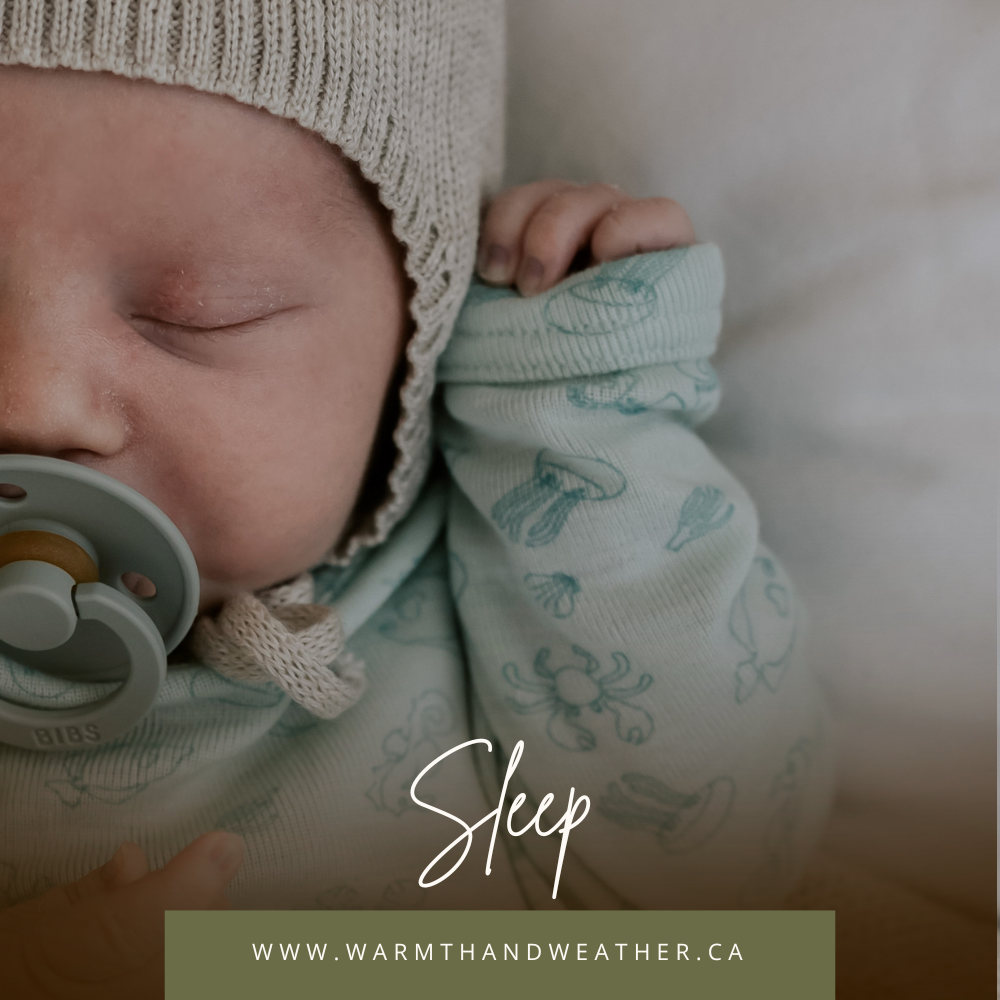
Have you ever wondered why wool is used for making baby blankets, sleep sacs or sleepers? What is the magic of wool?
“Babies are amazing…they begin each day all warm and sleepy, smelling of promise.”- Julia Roberts
Blankets, Sleep Sacs, and Sleepers
Baby blankets, sleepers, and sleep sacs are essential items for little ones—and when they’re made of wool or wool/silk, they become truly magical. Wool is natural, hypoallergenic, insulating, temperature-regulating, moisture-wicking, odor-resistant, stain-resistant, self-cleaning, and biodegradable.
Isn’t Wool Scratchy?
You might wonder if wool will irritate your baby’s skin. Scratchiness in wool depends on the type of wool and length of the fibers. Our products are made with the softest, high-quality merino wool, which is gentle against the skin. Studies show that true wool allergies are rare; most reactions are due to chemicals used in wool processing. Choosing organic or eco-friendly wool typically resolves this issue.

Discover the science behind wool and its magic.
Temperature Regulation
Until about 18 months old, babies struggle to regulate their own body temperature, especially if they were born prematurely or have a low birth weight. This is due to their skin’s surface area being large compared to their body weight, making it easy for them to lose heat quickly. Babies, especially those who are unwell or premature, need to be kept a little warmer than adults. Check your baby’s temperature by feeling the back of their neck or stomach, and ensure warmth reaches their tiny fingers and toes.
In cold weather, wool creates an insulating barrier by trapping warm air close to the skin, maintaining the perfect microclimate. It’s also excellent at blocking wind, making it perfect for outdoor use. During hot weather, wool works the opposite way, wicking sweat away and keeping your baby cool. This unique cooling effect is why many cultures use wool even in summer. Sheepskins in strollers or car seats can keep your little one comfortable all year round.
Supportive to Sleep
One of wool’s most amazing features is how it promotes restful sleep by helping regulate body temperature. Research has shown that premature infants who slept on lambswool gained weight faster than those using cotton sheets, as wool’s soothing texture helps lower metabolic activity. Swaddling in a wool blanket keeps your baby comfortably thermo-regulated and might even give you a few extra hours of sleep!
Self-Cleaning, Hypoallergenic, and Easy to Wash
Wool contains lanolin, a natural antibacterial that helps keep the fabric clean. When wool gets wet, some lanolin converts to lanolin soap, which adds to its self-cleaning properties and keeps wool fresh-smelling. Wool also repels dirt and resists stains—perfect for messy little ones. Liquids tend to bead on the surface rather than absorb, making spills easy to clean. If a wash is needed, wool is machine washable; just use an approved wool detergent, a gentle cycle, and lay flat to dry.
Eco-Friendly
Wool is naturally biodegradable, sustainable, and environmentally friendly. When it decomposes, it enriches the soil, adding nutrients back to the earth. It’s an abundant, renewable resource, making it an excellent choice for conscious parents.

Wonderful Wool
Wool fibers can bend and twist over 30,000 times without breaking, compared to only 3,000 times for cotton. Wool is also naturally fire-resistant—it’s hard to ignite, doesn’t melt or drip, and forms a self-extinguishing char when burned. The bounciness of wool fibers gives it elasticity, allowing it to stretch and return to its shape, making it easy to dress and undress your baby.
Raising Sound Sleepers by Dr. Adam Blanning
In Raising Sound Sleepers, Dr. Adam Blanning offers observations, research, insight, and practical advice for helping children from infants to teenagers learn skills and habits to assist healthy sleep. The discussion ranges from how parents can avoid bedtime meltdowns to the simple, natural steps caregivers can take to help children feel calm and to encourage them to fall asleep more consistently. Detailed insights will help parents and caregivers to support children in using an anthroposophic understanding of the senses—from taste, smell, and touch to balance and movement.
Adam Blanning MD is a family physician practicing anthroposophic medicine and a past president of the Anthroposophic Health Association, lectures and teaches internationally on topics relating to holistic medicine and the dynamics of human development, with a special interest in supporting children. He is also the author of Understanding Deeper Developmental Needs, an in-depth exploration of challenging behaviors in children.



